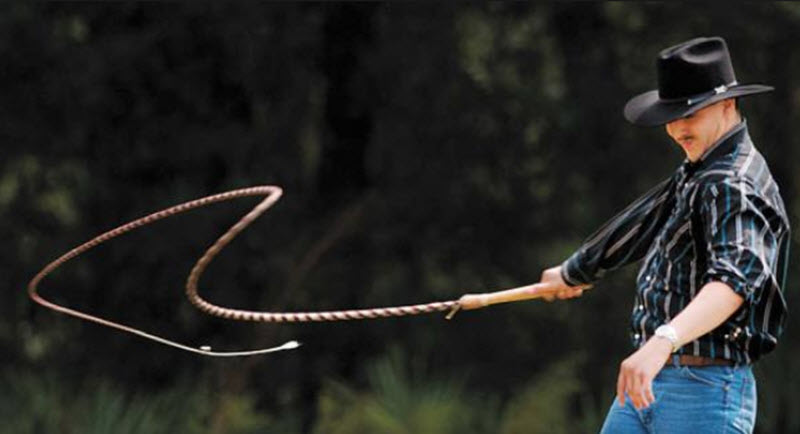Whipcracking
The crack of a whip is a small sonic boom produced when a section of the whip moves faster than the speed of sound.
Whipcracking can be a very useful tool when handling livestock and horses, and can for instance be used to encourage livestock to move even from a distance and without actually whipping any animal.
Rhythmic whipcracking belongs to the traditional culture of various groups in northern and central Europe, especially in Germany, Hungary and the Alpine region. In Bavaria, carriage drivers developed an elaborate system for signalling their approach and identity using their whips.
Today, whipcracking is also a competitive sport as well as a type of performance art.

Two examples from the Guinness Book of Records
Longest whip cracked
On 18 August, 2016, Nathan Griggs cracked a whip measuring 100.473 meters. The event took place in Defiance Mill Skate Park, Charters Towers, Queensland, Australia.
Griggs designed the whip himself. The whip, which weighed 35 kg, was made from traditional materials.
Loudest whipcrack
On 21 June, 2017, the sound of a whip cracked by Adam Winrich reached 148.7 db(A). The event took place at the Eau Claire Children’s Theatre in Eau Claire, Wisconsin, USA.
Shows & Contests
Australia
Towards the end of the 20th century, a renewed interest in old-fashion pursuits such as whipcracking swept Australia. Today, whipcracking is both a hobby and a competitive sport, and there are also shows where whipcracking skills are exhibited for entertainment purposes.
The whip of choice in Australia is usually the Australian stockwhip.
Stockwhip contests will typically involve complex and precis target work and multi-cracking routines. Here are some examples of popular disciplines:
- Cracking routines (making audible cracks in prescribed moments)
- Cracking patterns
- Cracking with two whips
- Target routines
- Target cutting
- Object moving/manipulation
- Object wrapping
Bavaria (Bayern), Germany
In Bavaria, some musical bands include whipcracking in their performances. Whipcracking is also a well-known sport and there are several whipcracking associations. Aperschnalzenis an old form av competitive Bavarian whipcracking that was on the verge of dying out before it was revived again during the first half of the 1900s. In Bavarian, Aperdenotes an area free of snow, and the sport is believed to be rooted in pagan whipping rituals for driving the winter away.